I prepared for the Carnival of Evolution late at night over the last several days, bracketing the Halloween holiday, and coupled them with my traditional custom of watching horror movies. It wasn't a good match. The evolutionary stories were far more frightening!
Terrifying complexity!
Let us consider the mind-blasting madness of dealing with tens of thousands of genes interacting epistatically with one another.
The second problem is that while it may in theory be possible to assign fitnesses to individual alleles at individual loci, there are some 25,000 loci in humans, which seems to be about right for most organisms. Reducing selection coefficients to individual loci requires solving a problem in 25,000 unknowns. This problem is exacerbated by the fact that the genes are linked, and in linkage disequilibrium. In short it is what is called an NP hard problem.
Or the prospect of having to solve math problems in biology. I have made students weep by doing that.
You’ve got two copies of each chromosome, having received one copy of each chromosome from your mother and one chromosome from your father (this is true for your autosomes, but not for your X, Y, and mitochondria). When it comes time to pass on your DNA to the next generation, you in turn package up a single copy of each chromosome into a sperm/egg. Sometimes you pass on either mum or dad’s copy of a chromosome at random, often though you pass on a mosaic consisting of the two chromosomes (a recombinant chromosome).
The question came up (via a article by Razib Khan) of what is the probability that by chance your parent entirely failed to pass any autosomal DNA from a grandparent to you (e.g. your father fails to pass on any autosomal genome from your paternal grandfather)?
Wait. How many different ways can you draw a tree?
These days, there are many unrooted affinity-type networks used to display conflicting phylogenetic signals. There are many different methods available, although the various forms of splits graphs seem to dominate, especially NeighborNet and Consensus Networks (for species-level data), and Reduced Median Networks and Median Joining Networks (for population-level data). However, phylogeneticists are interested in genealogies, not just data displays.
Oh, my god. This person is inciting more math!
So, folks: that is what we need! More spatiotemporally replicated studies of selection in naturally occurring populations – particularly studies NOT near 40°N latitude. Don’t forget to report your standard errors, and if you do gamma estimates, don’t forget to double them (Stinchcombe et al., 2008)! Happy selection estimating!
It's OK, though. it's all futile, so you might as well give up.
There is a version of a cybernetics-like model that may deal fairly well with tumor suppressor gene regulation. I previously reviewed a type of metabolic pathway called the futile cycle [7] here on Synthetic Daisies. The sole purpose of a futile cycle (Figure 3) is to convert one product to another, and then re-convert to its original form, expending energy in the process but producing no distinct output [8]. In some ways, this resembles the repressilator motif in gene regulation [9]. However, the futile cycle might also be applied to gene expression and genetic regulation in its own right, particularly with respect to stochastic gene expression.
Things from the ancient past!
Fear the brains from a half billion years ago! Unearthed!
So here’s (a concise history of) what happened since a little creature called Alalcomenaeus died:
Its body sinks to the ocean floor, gets covered in sediment and slowly turns into a stony fossil. Meanwhile, all the world’s land has time to glom together into a mega-continent called Pangaea before breaking up again. Life, was restricted to the oceans, invades the land. Plants and fungi go first, producing thin coverings of mosses and lichens and eventually giant forests. The insects appear, and take to the skies. Other marine animals evolve familiar traits like bones and jaws, and their descendants diversify across the land. Dinosaurs come, see and conquer, before (mostly) dying out. Mammals get their day and one of them, armed with technology and knowledge, unearths Alalcomenaeus from its ancient resting place in what is now China.
Ghosts!
How dare it be suggested that species are phantasms?
But species? I am aware of no theory that requires them. Having made that outrageous claim, I had better explain what I mean before I am attacked by roving bands of disaffected taxonomists.
Or that they are products of theological nightmares? This man is a heretic.
The reason we have a notion of species in biology at all is because of Noah’s Ark…
Roving bands of disaffected taxonomists are too good for him. Unleash the plagues!
The Plague!
Did you know that Back to the Future is a horror movie? We're just waiting for the ending.
Unfortunately, moviemakers know little about evolutionary biology and host-parasite interactions. Indeed, Michael J. Fox is travelling through time without any assessment of disease risk. What would have happened if he had a 1985 Penicillin-resistant nasty cold and contaminated his father in 1955? He might have destroyed his father and his own present. And even worse, what if he brought back the Black Death or the poxs from 1885? Would we be able to control public health and prevent a new pandemic? According to the Back to the future script, the past Michael J. Fox is taking the DeLorean time machine again to arrive in October 21th 2015... This is EXACTLY two years from now, so we better start worrying!
Oh, sure, they're just preying on bacteria now, but give them time.
Virulent phage infect bacteria, and they have life-cycles like those of insect parasitoids; that is, a successful infection is lethal to the host, and many phage are produced from a single infection. In this paper, we examined the ecological and evolutionary dynamics of the interactions between E. coli and four different virulent phages. First, the Lotka-Volterra predator-prey model – modified to include resource-based growth for the prey (bacteria) and a time-lag associated with predator reproduction (phage replicating inside bacteria) – predicted reasonably well the short-term dynamics of the interaction between E. coli and one of the phages, called T4. Second, the model was extended to include the evolution of bacteria that are resistant to phage attack.
Your doom will sneak up on you from an unexpected quarter: 'ware the bacon.
It would seem that between the global hitchhiking of feral pigs with human migration, America’s absurd obsession with bacon and the possible emergence of pandemic influenza via recombination of human and porcine strains, the past, present and future of our civilization are inextricably linked to that of the domestic pig.
Skulls! More skulls!
John Hawks is way too enthused about fondling skulls.
It smells like ashes. Holding it and examining it is really not like the other fossil crania I've studied. The other Dmanisi crania strike me as being very like some Neandertals in their preservation -- not with the heavy mineralization or "shine" of more fossilized crania. But this new skull is earthier. It has the feel of some Bronze Age crania. The preservation is remarkable.
Isn't the reason we walk upright to put our skulls prominently up top?
Walking upright is one of the defining features of humans, separating us from the rest of the living apes. So it’s hardly surprising that the origins of bipedalism are a subject of great interest to palaeoanthropologists. Even I’ve probably spent more time dwelling on the subject than is healthy (particularly when arguing with Answers in Genesis. That’s never good for you). Yet despite all of these posts, I’ve never really addressed the ultimate question: just why do we walk upright?
Or perhaps it is to free up hands that clutch?
There’s an interesting new study that looks at how our hands and feet are wired in our brains. The results of the study suggest that hands for tool use evolved before feet for walking (the debate is over whether we evolved walking to free up our hands for tool use, or we evolved tool use after our hands were freed up because of upright walking).
It takes a special kind of kink to contemplate skulls and talk about reproduction.
What has been seen suggests that there was in Eurasia some inter-group admixture. For example, one can see close sequence similarity across a given chromosome among the fossils, but this is interrupted here and there by runs of rather different, and seemingly more distant sequence that seem to come not from the same lineage but from more distantly related ones. Such 'introgression' as well as sequence elements in these same genomes that may have quite different apparent times of common ancestry. The general interpretation of such evidence is that after some thousands of years of separation, individuals came together (so to speak) and produced offspring.
That of course implies that, by the classical species definition of reproductive incompatibility, not only did these guys not exterminate each other or manifest the CEP (at least, not immediately), but they were reproductively compatible with each other. Nor do these data preclude the gene flow time-diminution issue. Hello, single species hypothesis again?
Monstrous beasts!
The Legless Lizards of LAX already sounds like a horror movie title.
Last month, biologists announced the discovery of four new species of lizard, not in an exotic tropical jungle, but right under our noses. The new-to-science animals (from the genus Anniella) were found at several unlikely locations — including in an abandoned lot in Bakersfield, California, and near the runway at Los Angeles International Airport. But don't count on catching sight of one of these critters the next time you have a layover at LAX. First, they are small — less than 8 inches long. Second, they live mostly underground (the researchers had to tempt them out of hiding by leaving pieces of cardboard and plywood on the ground). And third, even if you did see one, you might not recognize it as a lizard. The four new species have no legs and could easily be mistaken for snakes!
Lest you think evolutionary biologists are obsessed with legless lizards, have no fear: this post is more about multilevel selection. You find that even more terrifying? You are wise.
Two models for the evolution of leglessness in snakes. One is terrestrial, the other aquatic. The currently favored hypothesis is that ancient monitor lizards gave rise to mosasaurs, which in turn gave rise to snakes. In this hypothesis the garter snake sunning in your back yard is the descendent of a sea monster.
I shall have nightmares about the beast with two tails!
What’s a bird to do if his flight-approved, aerodynamic tail isn’t showy enough to attract the ladies? Have two tails of course. Anyway, that seems to be how the Early Cretaceous bird Jeholornis solved this problem. Scientists led by Jingmai O’Connor of the Chinese Academy of Sciences discovered that Jeholornis had two functional tails.
Do not neglect the small creepies and simple wormy molluscs. They'll get you eventually.
With over 200.000 species described, the Mollusca – soft-bodies animals that, among others, include snails, slugs, mussels, and cephalopods – constitutes one of the most species-rich animal phyla. What makes them particularly interesting for evolutionary studies, however, is not the sheer number of their representatives, but rather their vast variety of body morphologies they exhibit. Ever since they have been unambiguously assigned to the phylum, a group of worm-like, shell-less mollusks whose body is entirely covered by spicules – the Aplacophora (“non-shell-bearers”, usually small animals in the mm-range that inhabit the seafloors from a few meters to abyssal depths) has been hotly debated as being the group of today’s living mollusks that most closely resembles the last common ancestor to all mollusks.
And of course the creepiest are…
INSECTS!
You may wonder where they came from, but I notice the scientists don't even consider the hypothesis of nuclear testing in the Arizona desert.
It’s been known for a while that ants evolved from a wasplike ancestor, but the relationships among living wasps and ants have been unclear. An new online paper in Current Biology by Brian Johnson et al. (the senior author is my old friend Phil Ward at UC Davis), using a huge amount of sequence data, seems to have resolved the situation pretty definitively.
Not only are these arthropods thinking, planning machines, but they plan but one thing: Mating!
There are many wonders in nature and it is tempting to look at ourselves and believe that while we are conscious, intelligent beings, the rest of living nature is made up mainly of molecular robots, that respond much like thermostats and little more than that. But that arrogance may be badly misplaced. Not only do simple, lowly creatures have complex decision-based lives, but they often do things in ways similar to what we do--often using evolutionarily similar genetic mechanisms.
That is, when they aren't planning to kill you with their stings.
As most of my friends on the mainland don longer sleeves and more layers, it’s hard not to be a little smug about living in paradise. While, in their neighborhoods, leaves are falling off of trees and icy winds threaten to bring snow, I can throw on a T-shirt and shorts, grab a picnic basket, and hike to a scenic overlook for lunch. But Hawaii’s ever-sunny weather comes with one side-effect that can be deadly serious: year-round, Hawaii has bees.
Childbirth! Aaaaiee!
I've seen a few births. Newborn babies are the scariest thing on the planet. Don't let this cheerful story fool you.
Want to get closer to your primal beginnings? Have kids. During nine-months of pregnancy, you will learn about all the evolutionarily-influenced mechanics of giving birth, from the fetal acrobatics involved in maneuvering an enormous head required to house our big brains through a birth canal constrained in size so that human females can walk upright. Next time you look at a newborn baby, take a moment to appreciate these many echoes to our primitive origins.
Perhaps you think laying eggs would be less painful or frightening. Not after you read about the 35 million year old fossil bird egg!
In the case of the Nebraska egg, one of its most salient and confusing characteristics was right on its surface.
“Unlike the smooth surface of most modern eggs, dinosaur eggs typically exhibited surface ornamentation — raised bumps or ridges,” Jackson said.
And despite its relatively young age, the Nebraska fossil egg, too, had an unusually textured surface, with tiny lumps and waves that she and her team describe as an “undulating ornamentation.”
The Faculty!
Strangely heroic academics plumb the murky depths of ancient history…the 1960s and the curious mysterious history of the term "Junk DNA"!
“The term ‘junk DNA’ became popular in the 1960s (e.g., Ehret and de Haller 1963). It was formalized by Susumu Ohno in 1972.”
I sense a disturbance in the institution: the American Society for Biochemistry and Molecular Biology not be as clever as they might think.
I think it's wonderful that students have a knowledge of Darwin's Theory of Evolution by Natural Selection. It would be horrible if ASBMB thinks that this is all there is to evolution. That would be propagating one of the major misconceptions about evolution; namely, that "evolution" and "natural selection" are synonyms. Let's hope they aren't making that mistake ... it's not looking good.
Be wary of charlatans! Keep your eyes open for the parasites who wish to intrude on your institution of learning! It's a trap!
A short time ago, as I headed to teach one of my classes, I saw an older white guy writing a chalk advertisement on the pavement in front of the student union. The advertised talk seemed to be a presentation or discussion of the problems with evolutionary theory. Since I did not have my son that evening, I decided to attend.
This was not a talk, presentation, or discussion of the problems with evolutionary theory. No, this was nothing more than a collection of well-disputed creationist talking points hiding under the auspices of an honest scholarly seminar.
Saving the most horrible for last!
No! Anything but this! You can teach phylogenetics with SpongeBob Squarepants? The horror.
Importantly, the main characters in the cartoon have representative members of several phyla (notably, except the Cnidaria). Indeed, the List of SpongeBob SquarePants characters at Wikipedia makes this very clear. This opens up the possibility that they could be a means of using modern culture to introduce phylogenetics. This idea has been independently discovered at least twice.
Don't panic, here's a curative. When you're dreading the Spongebob, just consider the remarkable evolution of baleeen.
During feeding baleen whales open their mouths to take in massive quantities of water containing zooplankton such as small fish and crustaceans, they then close their mouths and, using their tongue, expel the water through the baleen plates trapping their prey in the process. Using this feeding technique the blue whale (Balaenoptera musculus) may take in and expel more than 70 tons of water in one go!
Take that, minuscule annoying invertebrates!
Enough. Next month's chilling edition of the Carnival of Evolution will appear at Evolving Thoughts on 1 December.
- Log in to post comments

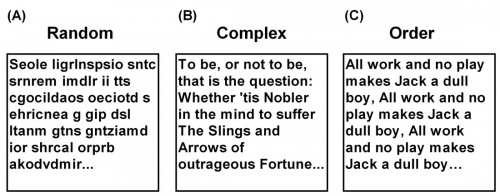
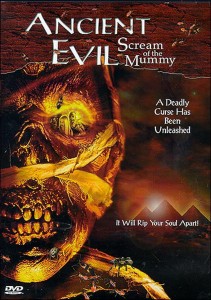


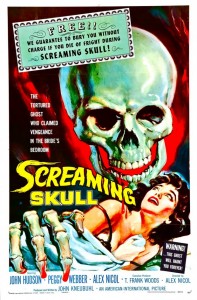
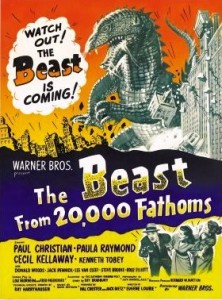
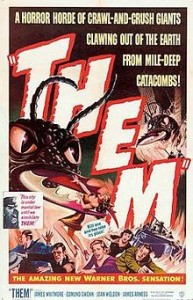
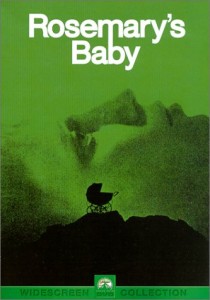
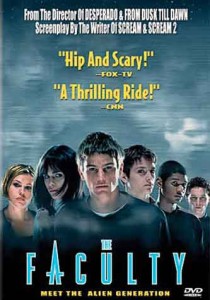
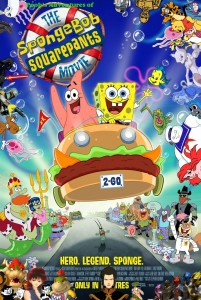

thoroughly enjoyable ramble through many misconceptions. Educational and jolly informative . The real wonders of evolution far outweigh the myths of the ancients.